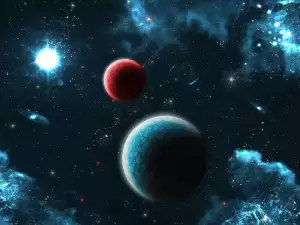With Earth's growing population and the diminishing resources, scientists are turning their gaze to the sky ever more frequently, with the hope of discovering other planets that would be suitable to harbor a new beginning for human life. Recently NASA announced that they have found 8 new exoplanets, suitable for life. Not one but 2 of them are Earth's "twins" and have conditions that can support life.
One of the authors of the study, Guillermo Torres, from the Harvard-Smithsonian Center for Astrophysics, announced that each one of these may be just like Earth. The terrain of these planets might be rocky, like on our own planet.
Thus, they fall into the habitable zone category, where the water would be in a liquid state. If this is so, the chances of life existing there are considerably high. Of course, it can be very different from the life we earthlings imagine.
The two exoplanets which are most similar in structure to our own are Kepler-438b and Kepler-442b and are located 470 and 1100 light years away, respectively. 1 light year is equal to 9461 billion kilometers or approximately 6 trillion miles. They orbit around stars called red dwarfs.
Red dwarfs are smaller and cooler than our own Sun. But despite this, they provide their planets enough light and heat for the presence of liquid water and therefore, life as we know it. Earth's "twin" planets complete a full orbit around their star respectively: Kepler-438b in 35 days and Kepler-442b in 112 days.

What's intriguing here is that both planets are similar in size to Earth. Kepler-438b is just 12% larger than Earth, with the chance of it being a rocky planet being about 70%. The diameter of Kepler-442b is 1/3rd larger than our own. Scientists give it about a 60% chance for it to be rocky.
Despite the encouraging data, scientists are unequivocal that it's still way too early to make any realistic assumptions about life on these planets. The 2 planets can be categorized as promising candidates however.
The data for the existence of the 2 exoplanets were sent in the form of photographs from the Kepler Telescope, which is Earth-trailing. For years, it has been used to photograph distant planets by observing the dimming of the light of a given star, as a planet passes in front of it.
The pictures received are compared to data retrieved from telescopes found on Earth's surface. The exoplanets found and confirmed by Kepler so far have reached 1000 in number.








